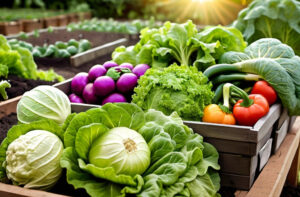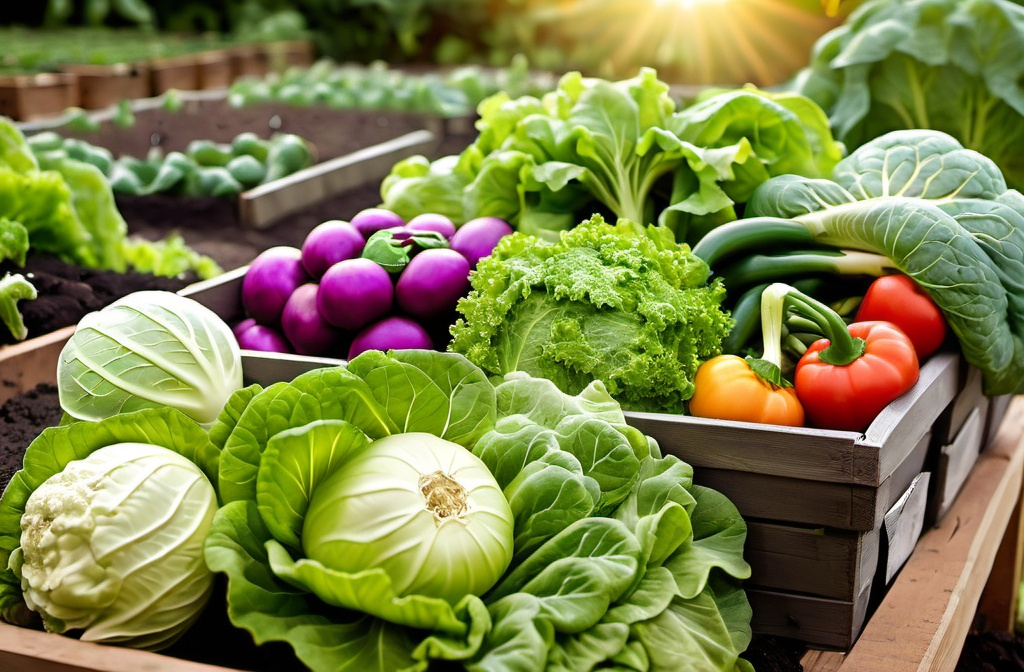
Organic gardening is all about growing plants, especially food, without synthetic pesticides or fertilisers, putting nature’s own tools to work. It’s like teaming up with nature to create a beautiful, harmonious garden. But why bother? Well, it’s healthier both for you and the environment. You avoid those harsh chemicals, and your veggies will thank you for it.
Getting those crisp carrots and lush tomatoes isn’t just about good vibes, though those are a nice bonus. Organic veggies pack a punch with nutrients, offering your body more of the good stuff while keeping the bad out. Plus, you’re reducing your carbon footprint and promoting biodiversity.
Before you dive in, grab these basics. Start by understanding key organic principles like maintaining soil health through composting and crop rotation. These aren’t just fancy words—they’re the backbone of sustainable gardening. They help your plants stand strong while ensuring future harvests.
If you’re just getting your hands dirty for the first time, setting up your organic garden starts with planning. You’ll want to consider everything from sunlight and soil type to the drainage in your location. It’s like tuning your guitar before a jam session, ensuring everything is in harmony before you plant a single seed.
Planning Your Organic Vegetable Garden
Picking the perfect spot for your garden is like finding the front row at a concert. You want to make sure your veggies catch the best rays of sunlight. Ideally, choose a location that gets about six to eight hours of sunlight daily. Stay clear of places where water tends to pool, cause nobody likes soggy roots.
Now, onto the soil. Your veggies’ performance depends heavily on this element, so let’s get it ready for the big show. Start by mixing in some organic compost and make sure it’s well-draining. Compost is like a gourmet meal for your plants; it enriches the soil, giving it all the necessary nutrients.
Next, think about what you’ll be planting. Some veggies love a little company—they call it companion planting. For instance, tomatoes and basil are a match made in heaven, enhancing each other’s growth and flavour while keeping pests at bay. A little teamwork goes a long way.
Choosing crops goes beyond personal taste—consider your local climate and available space. Taller plants might overshadow their shorter buddies, so they need to be positioned accordingly to ensure everyone gets their fair share of sunlight.
Before sowing seeds, save yourself some headaches by sketching out a simple garden plan. It doesn’t have to be Hollywood-worthy, just enough to guide you on planting days. Organise your garden layout to maximise space and ensure easy access for harvesting. It’s all about making the best use of what you’ve got.
Planting and Maintaining Your Organic Vegetable Garden
Time to talk seeds. Whether you’re picking heirlooms or hybrids, it all comes down to what suits your vibe. Heirlooms offer that authentic, grandma’s-garden kind of charm, with their rich flavours and genetic diversity. Hybrids, on the other hand, bring resilience and higher yields to the table. Either way, you can’t really go wrong.
Planting is more art than science. Consider your local climate when deciding on planting dates. Cooler temperatures are perfect for crops like spinach and lettuce, while warmer days suit tomatoes and peppers just fine. Get familiar with your plant’s spacing needs to ensure they aren’t getting too cozy or crammed.
Dealing with pests organically means working smarter, not harder. Use beneficial insects like ladybugs or opt for natural deterrents like garlic spray to keep intruders at bay. Healthy plants start with prevention, so keep an eye on them regularly and spot issues before they get out of hand.
Watering is your daily groove. Overwatering is a classic rookie mistake, so aim for a consistent but balanced watering routine, focusing on the soil, not the leaves. Use mulch to keep that soil moisture just right, and to ward off unwelcome weeds.
Feeding those future meals with organic fertilisers like fish emulsion or bone meal gives them the nutrition they need without any of the synthetic stuff. Your veggies deserve the best, and keeping their environment natural is key to some seriously tasty produce.
Harvesting and Enjoying Your Home-Grown Organic Vegetables
There’s nothing quite like that moment when you’re ready to pick the fruits of your labour. Timing is everything—harvest too early, and you’re missing out on peak flavour; too late, and you’re stuck with overripe duds. Know your veggies: pick greens like lettuce when they’ve matured but before they bolt to seed, and tomatoes when they’re firm and fully coloured.
Harvesting isn’t just about timing. Using proper tools like sharp scissors or pruning shears can help prevent damage. It’s tempting to twist or yank, but a clean cut ensures your plants can keep producing without fuss.
Once you’ve got your bounty, you’ll want to keep it fresh. Some veggies, like potatoes, are fine in a dark, dry place, while others, like leafy greens, prefer the fridge. Keeping everything organised and stored properly helps you enjoy your harvest longer.
Now for the fun part—cooking and eating what you’ve grown. Nothing beats a salad made with fresh-picked ingredients or pasta topped with homegrown basil pesto. Get creative in the kitchen, and you’ll find new ways to appreciate all your hard work in the garden.
Finally, be inspired by fellow home gardeners. There’s a whole community out there with stories, tips, and encouragement to share. Whether it’s exchanging seeds or sharing successes, connecting with others can make gardening even more rewarding.


Growing organic vegetables at home is such a rewarding experience, and this to-do list is a fantastic guide for anyone looking to start. One thing I’ve found particularly helpful is the emphasis on soil health. Ensuring your soil is rich in nutrients and well-drained can make a huge difference in the quality of your produce. I also appreciate the reminder to choose the right plants for your climate and season; it’s a step that can save a lot of frustration down the line.
From my experience, companion planting is another great tip. Pairing plants that benefit each other can naturally boost growth and deter pests. For example, planting basil near tomatoes can enhance their flavor and help repel insects. Additionally, the advice on regular watering and mulching is spot on. Consistent moisture and a good mulch layer can help maintain soil temperature and reduce weeds.
Overall, this to-do list covers all the essential steps for a successful organic garden. It’s clear, practical, and easy to follow, making it a valuable resource for both beginners and seasoned gardeners. Happy gardening!
Thanks for your reply Slavisa! I appreciate your feedback 🙂